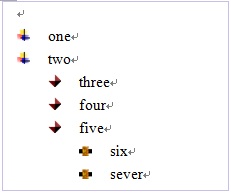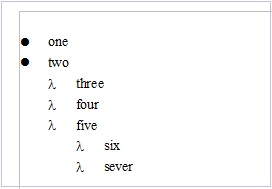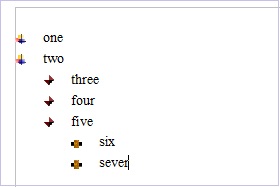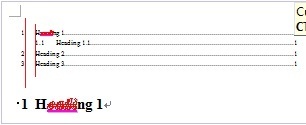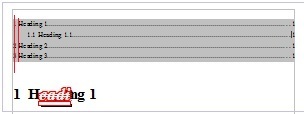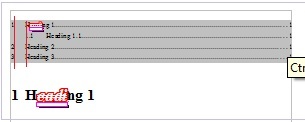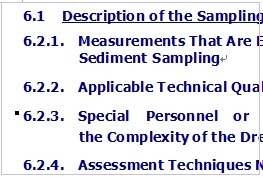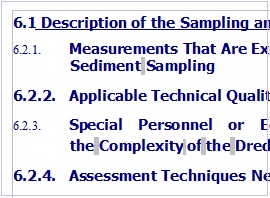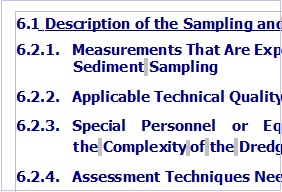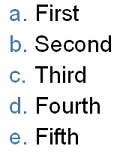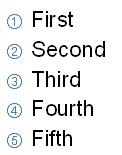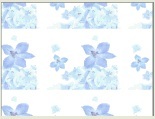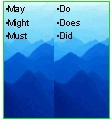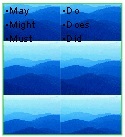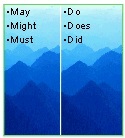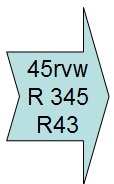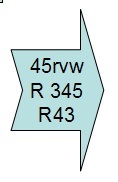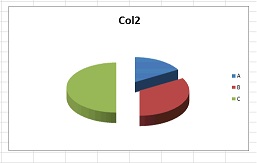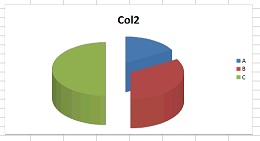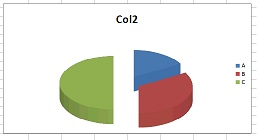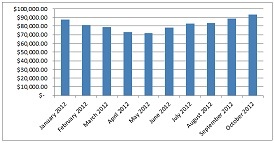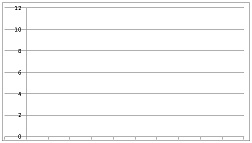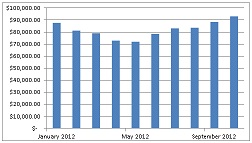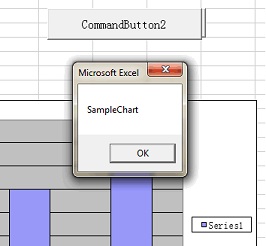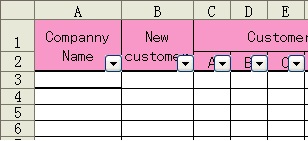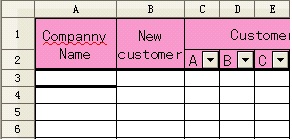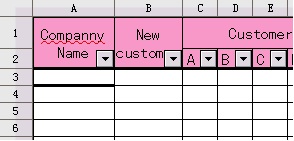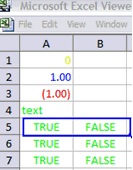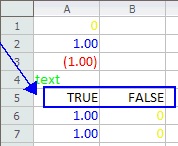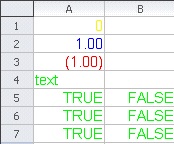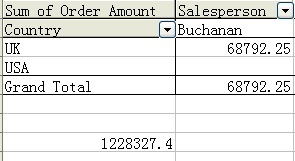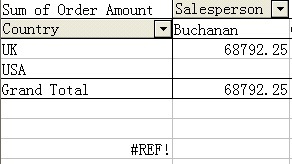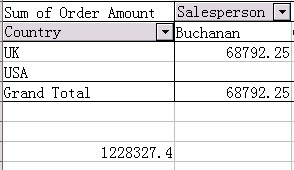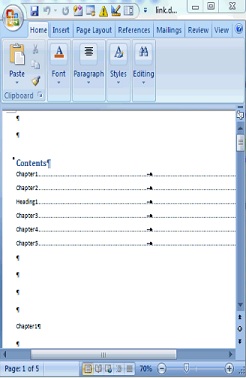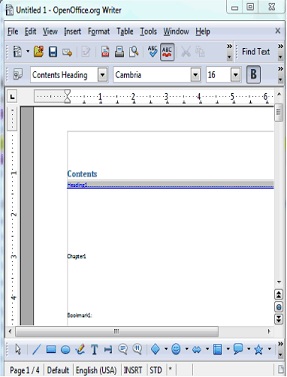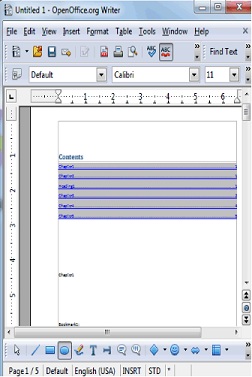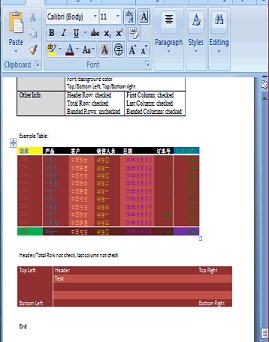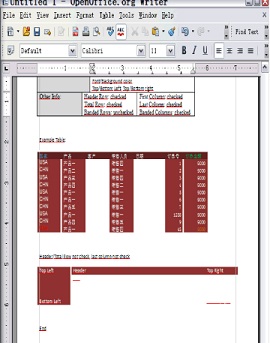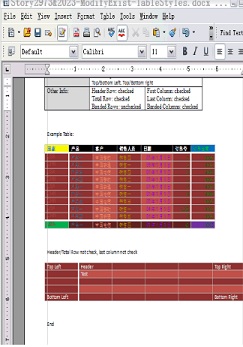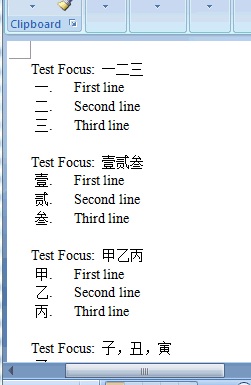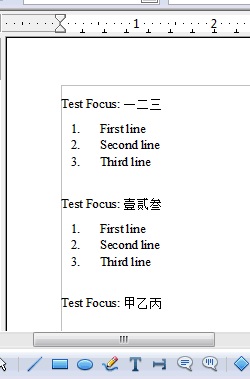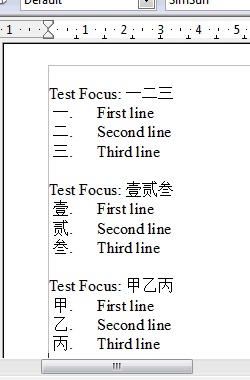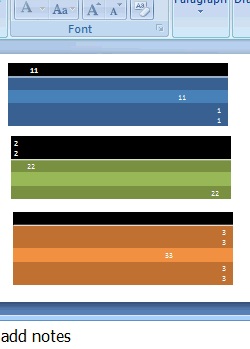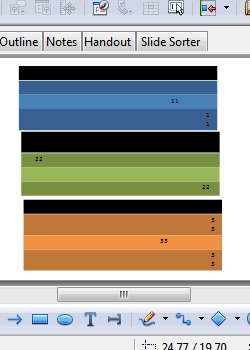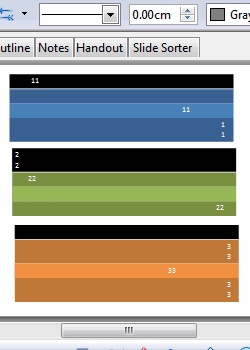Traduções disponíveis para: Asturianu (ast) | Bulgarian (bg) | Deutsch (de) | Ελληνικά (el) | Español (es) | Galego (gl) | Italiano (it) | Bahasa Indonesia (id) | Nederlands (nl) | Русский (ru) | 简体中文 (zh-CN) | 正體中文 (zh-TW)| [Portugal (pt)|https://cwiki.apache.org/confluence/pages/
Conteúdo
Comentários gerais
O Apache OpenOffice 4.0 já está disponível para descarregar na nossa página oficial. Após o grande sucesso da versão OpenOffice 3.4, que teve mais de 57 milhões de descarregamentos, esta importante actualização trás excitantes novas funcionalidades, melhorias e erros reparados. O OpenOffice 4.0 dispões de uma inovadora Barra lateral, suporte adicional para 22 idiomas (incluindo 3 novos idiomas), 500 erros reparados, melhorias na inter-operacionalidade com o Microsoft Office, melhorias no desenho/gráficos, melhorias de performance, etc. Pode ler os detalhes mais à frente nestas Notas de lançamento.
O novo logotipo é o resultado de muitas iterações de design, colaboração entre talentosos desenhadores e um concurso onde 40 logotipos foram classificados por mais de 50,000 utilizadores.
Queremos dar umas "Boas vindas" especiais aos nossos utilizadores que agora actualizam. Esperamos que gostem das novas funcionalidades, especialmente da Barra lateral. Esta funcionalidade foi baseada em código contribuído pela IBM, do seu produto Lotus Symphony. Nós adaptámos esse código e, baseados em várias rondas de comentários de utilizadores como você mesmo, melhorámo-lo e integrámo-lo no OpenOffice.
E para os novos utilizadores, bem vindos à comunidade! Esperamos que aprecie utilizar o Apache OpenOffice, o conjunto de programas de escritório líder, gratuito e aberto.
Como sempre agradecemos os seus comentários:
- Questões técnicas devem ser dirigidas aos nossos Fóruns de apoio da comunidade.
- Reportar erros (mas não questões técnicas) deve ser feito no nosso Sistema de rastreio de erros Bugzilla.
- Questões gerais também podem ser colocadas na nossa lista pública de correio dos utilizadores.
Também nos pode encontrar no Twitter, Facebook e no Google+ (não traduzidos).
Comunidade Código aberto
Na Apache trabalhamos com transparência, como uma comunidade de voluntários. Desenvolvemos programas de código aberto para benefício do público. Não lhe vamos implorar por contribuições monetárias. Mas se está interessado em se juntar a nós, para nos ajudar a fazer a próxima excelente versão do OpenOffice, então queremos saber de si. Não somos só programadores, mas também uma comunidade de testadores, desenhadores de ambientes do utilizador, desenhadores de páginas Web, escritores técnicos, peritos em acessibilidade, tradutores, peritos em redes sociais, etc. São bem vindos voluntários em todas as áreas. Pode encontrar mais informação na nossa página Colaborar.
Novas funcionalidades e melhorias
Nova Barra lateral
A Barra lateral é uma das principais novas funcionalidades do ambiente do utilizador em todas as aplicações do OpenOffice.
A Barra lateral faz melhor uso dos actuais ecrãs largos que as tradicionais barras de ferramentas. O conteúdo do painel 'Propriedades' é sensível ao contexto e mostra divisões com as propriedades do documento que são mais frequentemente usadas na tarefa actual de edição.
Clique nestas imagens para obter uma imagem mais detalhada:
Capturas de ecrã do Writer com contextos para texto, mapa de bits, e formas (da esquerda para a direita). O novo logotipo do OpenOffice foi colado como mapa de bits (ao centro) e como imagem vectorial modificável (à direita).
Se sentir que não utiliza um painel em particular muitas vezes, simplesmente clique no título e ele encolherá para uma linha única de texto. Um pequeno + ou - à esquerda do título do painel indica-lhe se o painel está encolhido ou expandido.
Diferentes painéis expandidos ou encolhidos
- Onze painéis de propriedades migraram do IBM Lotus Symphony: Alinhamento, Área, Aparência da célula, Gráfico, Linha, Formato numérico, Página, Parágrafo, Posição e tamanho, Texto e ajuste.
- Sete painéis migraram do antigo painel do Impress: Disponível para uso, Animação personalizada, Páginas principais, Recentemente usados, Transição de diapositivo, Desenho de tabelas, Usadas nesta apresentação.
- Quatro são diálogos não-modais (i.e. bloqueiam): Funções, Galeria, Navegador, Estilos e formatação.
- Um novo: Inserir.
Painéis do Symphony, o antigo painel de tarefas do Impress, diálogos do OpenOffice (da esquerda para a direita).
A largura da Barra lateral pode ser ajustada. Os controlos adaptam o seu tamanho concomitantemente. Se precisa de mais espaço então pode desancorar a barra — e possivelmente movê-la para outro ecrã — ou pode reduzi-la a uma fina barra de separadores. Um clique único num dos ícones e a Barra lateral está de volta.
Diferentes larguras da barra lateral: máxima, predefinida, demasiado estreita para mostrar o conteúdo, encolhida numa barra de separadores (da esquerda para a direita).
Barra lateral flutuante, pode ser movida para um segundo ecrã
Claro, nem todas as novas funcionalidades do OpenOffice são exclusivas dos controlos na Barra lateral. Se precisa de uma função avançada, clique no botão "Mais opções" na barra de título de um painel para abrir uma caixa de diálogo com muitas mais opções e propriedades.
Clique em 'Mais opções' para obter, bem, mais opções.
Pode encontrar mais informação na Wiki do OpenOffice.
Melhorias na inter-operacionalidade
A melhoria da fidelidade e inter-operacionalidade é um objectivo constante do Apache OpenOffice. E há muitas melhorias na nova versão. Aqui está uma visão global de algumas das melhorias de fidelidade desde o lançamento do Apache OpenOffice 3.4.1, incluindo novas funcionalidades, melhorias e erros reparados.
Documentos de texto
Descrição |
Original |
AOO 3.4.1 |
AOO 4.0 |
|---|---|---|---|
Suporte para marcas gráficas no MS word 2003 |
|
|
|
Melhorias de fidelidade na Tabela de conteúdos com o MS Word 2003 (tabulações, atributos e saltos...) |
|
|
|
Marcadores referentes a numeração normal |
|
|
|
Atributos das marcas numeradas determinados pelo caractere de parágrafo no MS Word |
|
|
|
Documentos de apresentação
Descrição |
Original |
AOO 3.4.1 |
AOO 4.0 |
|---|---|---|---|
Mantém numeração especial quando grava ou abre um ficheiro ppt |
|
|
|
Suporte para preenchimento especial do fundo em mosaico (tamanho da imagem cobre a página mestra) para ser exportado para ficheiro ppt |
|
|
|
As propriedades de preenchimento de um fundo gráfico na tabela já podem ser mostradas correctamente quando carrega um ficheiro ppt |
|
|
|
Suporte para linhas de ligação entre tabelas ppt |
|
Erro fatal no AOO 3.4.1 |
|
Seta cortada à direita com a propriedade "Ajustar forma ao texto" já pode ser importada correctamente |
|
|
|
Mantém efeitos 3D quando importa uma imagem |
|
|
|
Documento de folha de cálculo
Descrição |
Original |
AOO 3.4.1 |
AOO 4.0 |
|---|---|---|---|
Mantém a altura do gráfico circular quando abre um ficheiro Excel |
|
|
|
Suporte a dados de gráficos no intervalo especificado por uma fórmula de referência ou intervalo de nomes |
|
|
|
Mostra o nome do gráfico pelo API VBA clicando num botão |
|
|
|
Mantém o filtro de dados em células combinadas |
|
|
|
Mantém o código de formatação definido pelo utilizador em xls quando o valor da célula é booleano |
|
|
|
Suporte para a função GETPIVOTDATA do Excel |
|
|
|
Suporte para o código de formatação "0_;.00" |
|
|
|
OOXML geral
Descrição |
Original |
AOO 3.4.1 |
AOO 4.0 |
|---|---|---|---|
Suporte ao esquema de numeração Docx |
|
|
|
Suporta cor de fundo da tabela a partir de estilo de tabela em ficheiro docx |
|
|
|
Suporte a mais tipos de marcas numeradas em docx |
|
|
|
Suporte a cor do texto na tabela em pptx |
|
|
|
Melhorias em objectos Draw
Nova paleta de cores
A paleta de cores está melhorada e ampliada com uma selecção de cores mais úteis, arranjadas num novo esquema para simplificar a procura de cores.
A nova paleta é uma mistura da paleta do Lotus Symphony combinada com as cores originais mais úteis.
Novos gradientes
Os gradientes estão melhorados e ampliados com outros novos e mais úteis, tirados do Lotus Symphony. Mantiveram-se os antigos, mas moveram-se para o fim da lista (não estão na imagem). Estes gradientes criam preenchimentos muito mais bonitos para utilizações como fundo de diapositivos.
Novos melhoramentos e novos temas da Galeria.
Temas da Galeria adicionados do Symphony.
- Setas
- Marcas (ampliado)
- Computadores
- Diagramas
- Ambiente
- Finanças
- Pessoas
- Escola & Universidade
- Símbolos
- Formas de texto
- Transportes
Melhorias à Galeria existente
- Os temas antigos são mantidos e por vezes ampliados
- A Galeria é agora capaz de armazenar e usar gráficos SVG
- Muito mais gráficos estão agora no formato SVG, o que poupa espaço no seu computador e dá ao utilizador o formato vectorial da mais alta qualidade
- Possibilidade de adicionar o seu próprio formato de gráficos SVG e meta-ficheiros
- Pode agora ser orientada verticalmente ou horizontalmente e adapta a disposição automaticamente
- Também disponível a qualquer momento a partir da nova Barra lateral
Refinado o ambiente do utilizador para os manipuladores de selecção
- Os manipuladores de selecção foram trabalhados para se distinguirem mais facilmente.
- Foi adicionada transparência para dar uma ligeira 'pista' quando os manipuladores cobrem algo, mas só para o preenchimento (não para as linhas exteriores) para não os tornar mais difíceis de ver do que o necessário.
- O design foi ligeiramente arredondado.
- As cores foram foram aperfeiçoadas para melhor identificação (principalmente quando os manipuladores estão seleccionados).
- Quando viaja pelos manipuladores com o teclado (CTRL-TAB) os manipuladores amarelos usados para formas personalizadas, agora piscam como os outros para visualizar correctamente o manipulador activo.
Refinada a visualização da selecção
- Em muitas ocasiões, a selecção de um ou vários objectos foi melhorada usando a cor de selecção do sistema.
- A utilização e captura dessa cor de selecção do sistema foi unificada para garanti-la para todas as selecções em todos os sistemas.
- Foi acrescentado um ligeiro piscar para identificar objectos onde o texto pode ser adicionado começando a digitar ou premindo Enter.
Isto é usado em vários sítios, como por exemplo: objectos com modo de edição de texto, realce de objectos como alvo de Arrastar & Largar ou manipulação de objectos (antes eram usadas linhas pretas/brancas tracejadas).
Melhor pré-visualização da impressão
A pré-visualização da impressão está agora completamente suavizada. A versão anterior não estava, levando a que linhas finas desaparecessem ou resultassem em partes em falta.
Conversão para mapa de bits melhorada
A conversão para mapa de bits está muito melhorada para todo o tipo de objectos de desenho, incluindo gráficos OLE e outros. Isto é não só útil para conversão interna de objectos para mapas de bits, mas também para exportações onde os mapas de bits são necessários e para a área de transferência do sistema. Trabalha com objectos únicos assim como com selecções múltiplas. Transparências do objecto e suavização das margens estão agora perfeitas.
Preenchimento melhorado dos mapas de bits
Todos os objectos de desenho que podem ter um preenchimento por mapa de bits podem agora beneficiar do novo, grandemente melhorado Preenchimento de mapa de bits:
- O novo Preenchimento de mapa de bits preserva a transparência, a versão anterior não era capaz de o fazer e acrescentava sempre um fundo branco.
- Permite o uso de gráficos vectoriais que permanecem gráficos vectoriais quando processados (especialmente útil para imprimir, exportar para PDF e outros).
- Suporta SVG e meta-ficheiros como dados de preenchimento, sem a limitação de mapa de bits.
- Definições para mosaicos, auto-ajustar, tamanho, posição e desvio são totalmente suportadas (na caixa de diálogo Área).
- GIF's animados são agora permitidos como preenchimento.
Exemplos disto incluem:
- >Auto-criar um preenchimento independente da escala desenhando qualquer coisa a qualquer momento usando objectos Draw
- converter para meta-ficheiro
- servir de base para criar um Estilo de preenchimento
- Usar um SVG ou importar um formato vectorial (WMF) para definir um novo Estilo de preenchimento.
Pense nas possibilidades de preencher o fundo de páginas, barras de gráficos ou outros itens. Será usado como dados vectoriais ao imprimir ou ao exportar para PDF.
Enhanced Copy/Paste
All applications now support transparent and anti-aliased versions of, for example, DrawObjects in the selection to be exchanged with external applications. This is a result of the enhanced conversion to Bitmap and adding the PNG graphic format to the supported clipboard formats.
Non-Graphic objects are converted on-demand, and graphic objects are copied with full transparency and AntiAliasing support.
It is now possible to Copy/Paste any object to an external PixelGraphic application, modify it as needed, and copy it back to any OpenOffice Application without quality loss. This allows everyone easy and complete image manipulation outside the Office with the tool of his choice and the capabilities he needs.
Enhanced Drag&Drop
Drag&Drop has been enhanced by an 'internal' mode. It is now possible to Drag&Drop anything 'onto' an existing DrawObject to change it's graphic or fill style when holding CTRL+SHIFT (Ctrl+Cmd on Mac) during Drag&Drop.
As visual control, the target object for the Drag&Drop is visualized using the new Selection Visualization and a unique MouseCursor.
- Drag&Drop from external: change FillStyle to Bitmap (including transparence), use e.g. SVG or metafile
- Drag&Drop internal (click on the source object(s), wait a second until MousePointer changes, start dragging, hold CTRL+SHIFT)
- when source is a DrawObject: Styles are copied (LineStyle, FillStyle, etc.)
- when source is a GraphicObject: FillStyle is adapted to source's geometry content
Here is an example:
(a) Draw an object, e.g. a rounded rectangle with an outline, Draw an arrow object, choose fill and line style for it.
(b) If you Drag&Drop onto the target object, it copies FillStyle and LineStyle.
(c) If you convert the arrow to metafile (e.g. using context menu), Drag&Drop onto the target object, it gets filled with the arrow's vector data.
This comes in very handy if you need to quickly define an object FillStyles or want to copy the GraphicStyles of one object to others.
Also very useful:
- You can use the Gallery as in-betwen space for DrawObjects or GraphicObjects used for that purpose.
- You can directly Drag&Drop from there onto DrawObjects.
- You can Drag&Drop from external sources onto DrawObjects.
Adapt LineStart/End to LineWidth
It is practical when you change the LineWidth of an Object which has ArrowHeads defined at its start/end when the ArrowHeads used get adapted to your LineWidth change; else you have to adapt these by your own. This was already done for Draw and Impress. This is now unified and centralized and works in all OpenOffice applications.
SVG Export enhancements
Some enhancements for SVG export were added to avoid some quality losses. More improvements are planned in this area for future releases.
SVG/Metafile Break improvements
If an imported SVG/metafile is manipulated, it needs to be broken up into DrawObjects. This code was improved in this release. More improvements are planned in this area for future releases.
SVG Import improvements
Enhancements and bug fixes were made in the SVG Import code . Thanks to all Users who were reporting issues and providing test documents for SVG. If you have a SVG file which looks different than it should, do not hesitate to attach it to an issue in the Apache OpenOffice Bugzilla.
Picture Crop mode offers preview
When working on a GraphicObject it is allowed to set a Crop region for it. When using the interactive mode for that, the new version shows the non-visible part of the Graphic content (the croppped part) as transparent and surrounds it with a light border. This way you no longer have to guess where or how big the cropped data is.
This example shows cropping in an SVG graphic:
Unified visualization of ColorPalette popups
All places where a ColorPalette popup is shown (the form where the colors are organized in a raster) are overhauled and made to use the same sizes and width. The width (12 columns) was adapted to the new designed ColorPalette. For a picture see 'New Color Palette'
Transparency support for pixel formats (PNG)
When exporting selected drawing objects to formats that support transparency, e.g., PNG, OpenOffice now uses a transparent background by default. This allows to further use graphics created in other applications or for further processing.
Connectors support rotation
Connectors no longer disable rotation or shear tools when selected. While this is a small benefit with single connectors, it is very useful when selecting a number of graphic objects and wanting to rotate them. This was requested in the OpenOffice Community Forum, where a user wanted to rotate a drawing made of many draw objects and many connectors by 90 degrees. This is now possible without the inconvenience of deselecting all of the connectors.
Corrected Hatch fill style visualization
When zooming out or in small visualizations (e.g. Page Previews) objects or pages using a hatch fill style were poorly visualized since too many hatch lines were shown in a small area. The Hatch Fill Style now uses a minimal line distance to make it look good for visualizations in Edit Views. This was already the case in older office versions, but was lost in the redesign of the visualization.
Better gradient support in metafiles
Gradients in metafiles are rotated and sheared (slanted) together with the metafile and so behave similar to bitmap graphics. Start color and end color are included in those gradients now. This improvement becomes visible if you use a small number of gradient steps. All gradients are now shown in presentation mode the same as they are shown in edit mode.
Calc and Chart Improvements/Enhancements
Support relative Pie Chart Height:
For Pie charts imported from other formats, the Height attribute was not supported. This is added now and makes Pie Charts look more like the original.
New Functions
Calc now supports the spreadsheet functions: AVERAGEIFS, COUNTIFS, and SUMIFS. These functions allow you to combine several conditions.
Calc now supports the function XOR. The function completes the already available set of Boolean functions.
Calc now supports the functions LEFTB, RIGHTB, LENB, and MIDB. These functions are special versions for DBCS (double byte character set) languages.
Calc's RAND function was reimplemented to use the Mersenne-Twister algorithm.
Extensions Improvements/Enhancements
New Toolbar management
Extensions now use a new Toolbar management, see https://issues.apache.org/ooo/show_bug.cgi?id=121577 ; at the moment, Extensions for 3.x that are using the deprecated mechanism will have to be updated to work with OpenOffice 4.0. Many popular extensions, including dictionaries, are not affected by the change.
Unified menu API
The Menu API has been unified, making it more clear and API-user-friendly. The following interfaces have been deprecated and replaced: css.awt.XMenuExtended, css.awt.XMenuExtended2, css.awt.XMenuBarExtended, css.awt.XPopupMenuExtended. See https://issues.apache.org/ooo/show_bug.cgi?id=121542#c2 for details.
Note: extension authors who require more information on the above changes are encouraged to post their questions to our API mailing list.
Performance Improvements/Enhancements
Many resource leaks were fixed.
Many resource leaks were fixed, reducing memory requirements and improving application stability.
Speedup of Graphic Rendering
More Rendering speedups are used (on systems supporting it, system-dependent)
- Bitmaps with transparency are painted directly
- Bitmaps which are transformed (rotated/sheared/mirrored) are painted directly
- Lines with LineWidth and/or transparence are painted directly
- Geometry and Pixel data is buffered in system-dependent formats
For example, this allows even animated GIFs to be used as object fill style for any object and to transform these in real time (when supported on the system). It also greatly enhances visualization geometry during editing (in the EditViews) when supported.
Additional Language Support
New translations available in Apache OpenOffice 4.0 include:
- Greek
- Portuguese
- Tamil
Updated translations include:
- Asturian
- Czech
- German
- British English
- Spanish
- Finnish
- French
- Scottish Gaelic
- Galician
- Hungarian
- Italian
- Japanese
- Korean
- Dutch
- Brazilian Portuguese
- Russian
- Slovak
- Slovenian
- Simplified Chinese
For a complete list of available languages and language packs see this detailed download page.
Note: Several other language translations are in-progress and will be released when available. If your language is not listed above, and you want to help translate the user interface, we welcome any and all volunteers.
Improved Quality Management Tools
New Automated Testing Framework
Apache OpenOffice 4.0 has a new automated testing framework based on JUNIT that tests in the areas
- BVT (Basic Verification Tests)
- FVT (Functional Verification Tests)
- PVT (Performance Verification Tests)
- SVT (System Verifcation Tests)
Changes that Impact Backwards Compatibility
Module binfilter removed
We no longer read or write the legacy StarOffice file formats (files with extensions .sdw, .sdc, .sdd, etc.). Removal of this code makes the OpenOffice codebase easier to maintain. The legacy formats have never been the default format in any version of OpenOffice. Users with legacy StarOffice documents are advised to re-save them into ODF format (.odt, *.ods, *.odp, etc.) *before upgrading to Apache OpenOffice 4.0. This can be done using File - Wizards - Document Converter in OpenOffice 3.x OpenOffice 1.x files (*.sxw, *.sxc, *.sxi) are still supported.
Python support updated
PyUNO is now compatible with the latest C-Python 3.x but in order to reduce the impact for existing applications, support for C-Python 2.x has been preserved and remains the default. The internal Python, used by default in the Windows and MacOS-X ports, has now been upgraded with version 2.7.5 which fixes hundreds of bugs and has important performance improvements but is still compatible with previous versions. Existing scripts may require minor adjustments but will normally just continue working as before.
Support for system C++ STL
The stlport4 template library was obsoleted with the TR1 report of the C++ standard and was deprecated and no longer maintained. Apache OpenOffice 4 switches to the system's native standard template library, so extensions written in C++ need to be recompiled with the Apache OpenOffice 4 SDK.
Bug Fixes
As of July 17th 2013 there were 498 verified issues that have been resolved.
This list can be found at: VERIFIED or CLOSED
(An OpenOffice Bugzilla login will enable you to search for any bugs that may interest you.)
Important bug fixes have been made in these areas:
Support for Java 7, and the Java Access Bridge v2.0.3 implemented in JRE 1.7u6 and later has been restored. Windows OS users requiring Accessibility support for Assistive Technology tools can now use current Oracle releases of the Java SE 7 Runtime Environment and the Java Accessibility API on Windows.
The QA team has been tracking additional fixes as well. See their complete reports at:
http://wiki.services.openoffice.org/wiki/QA/Report/WeeklyReport
Known Issues
- Apache OpenOffice 4.0.0 will be flagged by the new Gatekeeper facility in Mac OS X Mountain Lion. This is a new feature to help guard against malware on Mac systems. There is a procedure laid out at the following link to allow applications not installed from the Mac App store to run. See the article at Mac support at http://support.apple.com/kb/HT5290.
- Apache OpenOffice 4.0.0 supports Java 7, which is the recommended configuration; but (especially on 64-bit Windows) you might receive warnings about the Java version being defective. In that case, download and install the Microsoft Visual C++ 2010 Redistributable Package. If you still have problems, install the most current JRE 6 version. Make sure you get the file "Windows x86 Offline (32-bit)". Then configure OpenOffice to use it at "Tools - Options - OpenOffice - Java". See this forum topic for more information.
- Apache OpenOffice 4.0.0. has got a new color palette. If you have migrated your "personal data" from a previous version, the old color palette is migrated too: you won't see the new palette and (if you are using a non-English version) some of the color names will appear in English only. To get the new palette close Apache OpenOffice and its quickstarter, search for the file “standard.soc” in your Apache OpenOffice user folder and rename the file, to “standard_AOO341.soc” for example. With the next start of Apache OpenOffice the new color palette is transferred to your user folder and is available.
- Some Extensions need to be updated to work with Apache OpenOffice 4.0 due to API changes and simplifications introduced with the new release. In most cases, the extensions can be easily adapted to work with OpenOffice 4.0 by their developers. Users and developers can find more information in this dedicated wiki page.
Upgrading/Installation
When installing Apache OpenOffice 4.0.0 on a machine that already has OpenOffice 3.4.1 or 3.4.0 installed on it, the user will be prompted on whether they would like "personal data" from the previous version migrated over to the new version. This includes information like custom spell checking words, dictionaries, extensions, etc. By default this migration is enabled, but the user can disable it via the checkbox.
In some cases, when the user first launches Apache OpenOffice 4.0 after an upgrade that included personal data migration, the user will see a dialog like this:
It is safe to click OK on this dialog.
After an upgrade is completed, there may be some files related to the older version of OpenOffice still on your machine. These can be safely deleted:
- The empty directory: C:\Program Files\OpenOffice.org 3\share\uno_packages\cache\uno_packages
- Install files directories from previous versions, often on your Desktop, with names like:
- OpenOffice.org 3.4.1 (en-US) Installation Files
- OpenOffice.org 3.4 (en-US) Installation Files
- OpenOffice.org 3.3 (en-US) Installation Files
For additional upgrade/installation information, please see the Install Guide.
Stay informed about Apache OpenOffice
You are encouraged to subscribe to the Apache OpenOffice announcement mailing list, to be receive important notifications such as product updates and security patches. To subscribe you can send an email to: announce-subscribe@openoffice.apache.org.
You can also follow the project on Twitter, Facebook and Google+.









